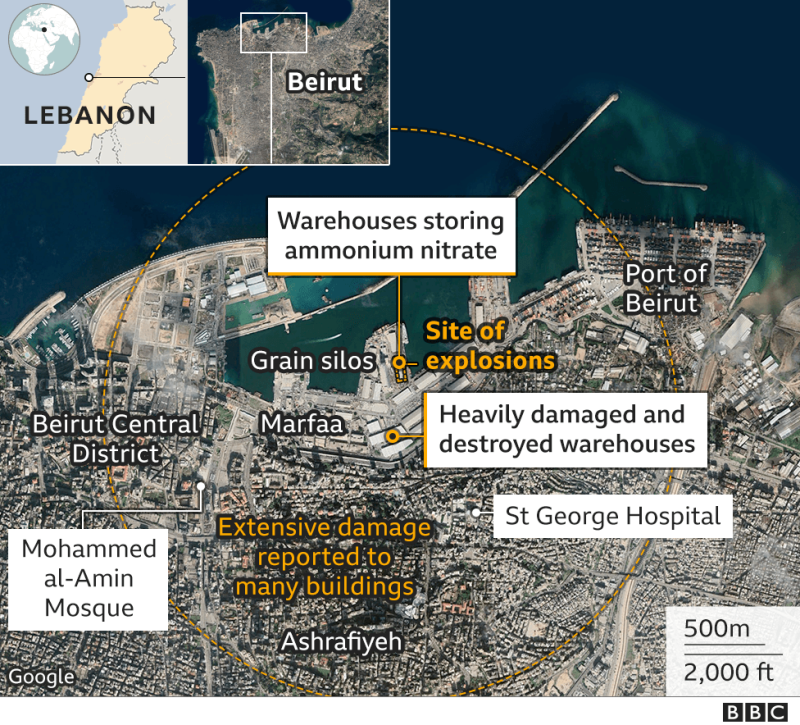The Lebanese government has resigned amid growing public anger following a devastating explosion in Beirut on 4 August that killed at least 200 people and injured around 5,000 others.
Here is what we know so far.
What happened?
The disaster was preceded by a large fire at the Port of Beirut, on the city's northern Mediterranean coast. In videos posted on social media white smoke could be seen billowing from Warehouse 12, next to the port's huge grain silos.
Shortly after 18:00 (15:00 GMT), the roof of the warehouse caught alight and there was a large initial explosion, followed by a series of smaller blasts that some witnesses said sounded like fireworks going off.
About 30 seconds later, there was a colossal explosion that sent a mushroom cloud into the air and a supersonic blastwave radiating through the city.
That blast wave levelled buildings near the port and caused extensive damage over much of the rest of the capital, which is home to two million people. Hospitals were quickly overwhelmed.
"What we are witnessing is a huge catastrophe," said the head of the Lebanese Red Cross, George Kettani. "There are victims and casualties everywhere."
How big was the blast?
The blast destroyed the immediate dockside area, creating a crater approximately 140m (460ft) wide, which flooded with seawater.
The warehouse where the initial fire and explosions were observed was obliterated and an adjacent grain silo was heavily damaged.
Satellite images show complete devastation in the port area, with one ship apparently blown out of the water and onto the dockside.
The explosion's shockwave blew out windows at Beirut International Airport's passenger terminal, about 9km (5 miles) away from the port.
The blast was also heard as far away as Cyprus, about 200km across the Mediterranean Sea, and seismologists at the United States Geological Survey said it was the equivalent of a 3.3-magnitude earthquake.
Based on an analysis of videos, a team from the University of Sheffield estimated that the explosion was the equivalent of 1,000 to 1,500 tonnes of TNT - about a 10th of the intensity of the nuclear bomb dropped on Hiroshima in 1945.
"Whatever the precise charge size, this is unquestionably one of the largest non-nuclear explosions in history, far bigger than any conventional weapon," said Professor Andy Tyas, an expert on blast protection engineering.
Ammonium nitrate is a crystal-like white solid commonly used as a source of nitrogen for agricultural fertiliser. But it can also be combined with fuel oils to create an explosive used in the mining and construction industries. Militants have made bombs with it in the past.
Experts say that ammonium nitrate is relatively safe when stored properly. However, if you have a large amount of material lying around for a long time it begins to decay.








.webp)
















